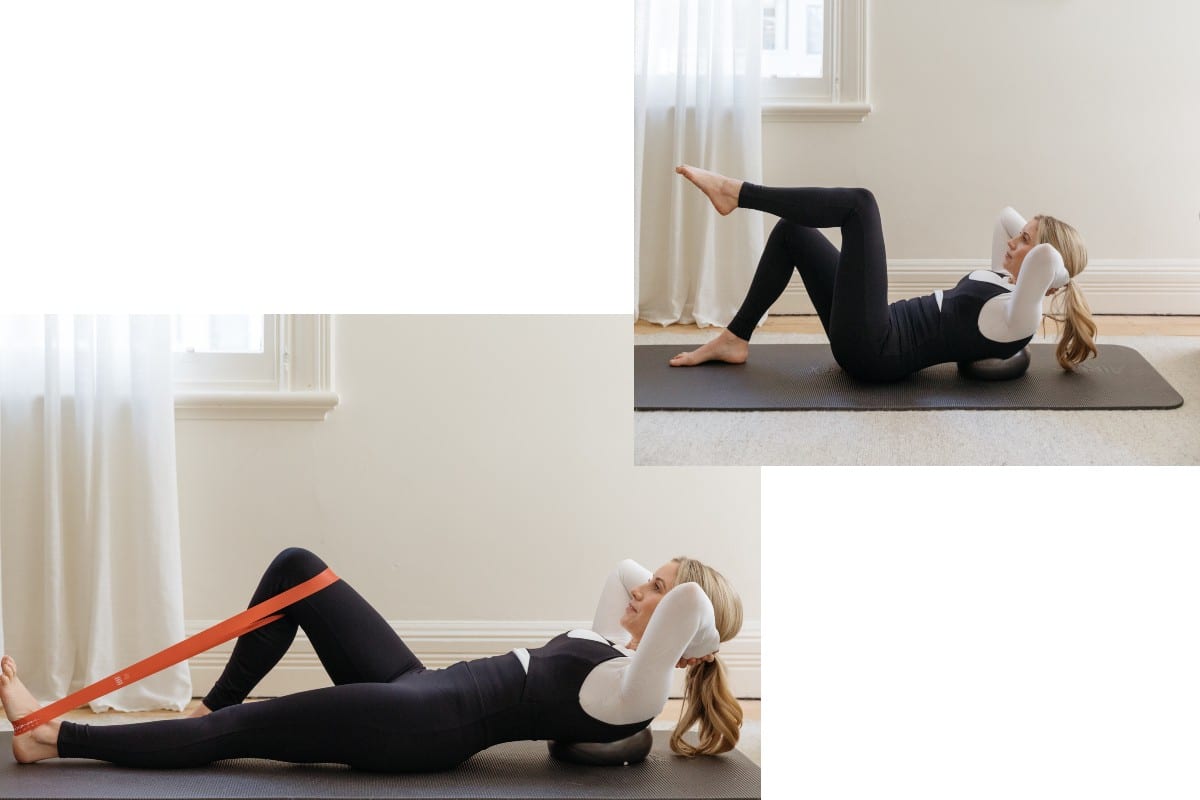
One of the most commonly asked questions when it comes to almost any form of exercise – but especially Pilates – is around how to correctly engage your core to get the most out of your workout. It might seem like a relatively easy thing to achieve; especially when you're 30 chest lifts deep and your abdominal muscles are absolutely burning. But that doesn't always necessarily mean you're tapping into those muscles in the right way.
As it turns out, Pilates can be a great vessel to help you better understand how to correctly engage your core both to build strength, but also to improve posture. Once you finally understand how to control and use these muscles more effectively; not only will you begin to get more out of your workouts, but harnessing your abdominal muscles can help with control and stability too.
As always, we look to Fluidform founder and principal instructor Kirsten King for guidance; as well as taking us through a quick 20 minute ab workout that is sure to get your core burning.
How do you engage your deeper abdominal muscles?
The key to finding that deep abdominal engagement is through effective breathing and form – keeping the pelvis and neck in a neutral position. A common mistake we see with chest lifts or sit ups is that people think the height of the lift and quantity of sit ups is important. We often hear “I’m not feeling it in my abs” or people pump through 100 sit ups and fail to build core strength and see results. More often than not, this comes down to incorrect form and breathing. What you might not know… when your chest reaches a certain height, your pelvis tucks and you lose ab connection entirely.
What is the most important thing to focus on during a chest lift?
Your breathing, and maintaining a neutral pelvis and neck position. Here are some cues to remember during an ab workout to properly engage and activate your core muscles. Remember, focus on connecting your breath to the movement and perfecting your form over how high you go and how many you can do. Quality over quantity.
To begin, start with this quick breathing exercise at home. Practice this everyday and start to familiarise yourself with this feeling of contraction and connection. Start to integrate this into your movement and feel the difference.
1. Place your hands onto the sides of your ribcage.
2. Inhale – breathe back and up into the ribcage – feel your ribcage expand.
3. Exhale – Draw the ribcage back together and breath deep into your abdominals.
Think about breathing up and down, rather than in and out. Your breath is closely linked to your abdominals, so when you exhale, you can feel your abdominal muscles contract (shorten) and connect.
Neutral pelvis position:
Maintaining a neutral pelvis is key to engaging your core. This position is where your pelvis is flat and open. Place the heel of your hands on your hips bones and your fingertips on your pubic bone, your hands should feel flat, parallel to the floor – not tilting forward or back.
Inhale to prepare and as you exhale, lift your chest while maintaining this flat, neutral position of the pelvis. You may not be able to lift as high, but remember the key is to use your breath to lift from your abdominals, without changing the position of your pelvis, chest and head.
Neutral neck position:
This leads to the next cue, maintaining a neutral neck position to reduce pressure on your neck and ensuring you are lifting from your abdominals, rather than your hands and arms. This comes down to the placement of your hands and elbows.
Interlace your fingers behind your head, and cradle the base of your head, with your thumbs running down the back of your neck. Ensure your elbows are in your peripheral vision.
Your neck should remain neutral – lengthened at the back, not tipping forward or back for the duration of the chest lift. The position of your neck doesn't change throughout, the movement comes from your core – hello abs!
How does a strong core benefit other types of movement?
Your core muscles are made up of four abdominal muscles, muscles in your back as well as your glutes. Together, these muscles work to support and stabilise your spine and pelvis. A strong core will improve your posture, balance, stability and help to prevent injuries across your entire body.
Our core muscles are literally at the centre of our bodies – our central powerhouse. When we consistently practice core engagement, we build strength and stability through our entire body. A strong core will improve our muscular performance and reduce the risk of injuries, benefitting all types of movement. A strong core gives us the ability to drive explosive, powerful movements from all areas of the body.
Let Kirsten take you through a Fluidform mini abs workout, below
If you made it through that ab burner and want to target a different part if your body; why not try this mini barre workout for a small hit of cardio.



